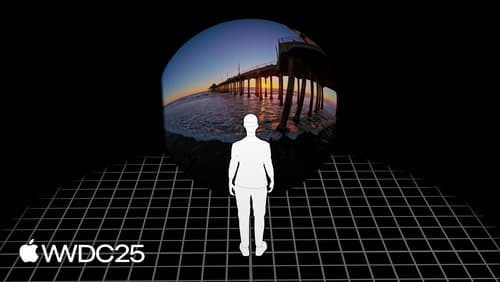video AI free
Asked on 2025-07-01
1 search
Apple's WWDC sessions have introduced several advancements in video technologies, particularly focusing on immersive and machine-learning-based video effects. Here are some highlights:
-
Apple Immersive Video Technologies: Apple has introduced the Apple Immersive Video Universal (AIVU) file type, which is a container for output video with necessary metadata for immersive experiences. This format is particularly useful for VisionOS apps and supports playback through QuickLook and HLS streaming. For more details, you can refer to the session Learn about Apple Immersive Video technologies.
-
Machine-Learning-Based Video Effects: The VT Frame Processor API has been enhanced to include effects like Super Resolution, Motion Blur, and Temporal Noise Filtering. These effects are designed to improve video quality and are optimized for Apple Silicon. For more information, see the session Enhance your app with machine-learning-based video effects.
-
Video Experiences for VisionOS: VisionOS supports a variety of video formats, including 2D, 3D, and spatial videos. The platform allows for immersive video playback, which can be integrated into apps using AVKit, RealityKit, and QuickLook. For a comprehensive overview, check out the session Explore video experiences for visionOS.
These sessions provide a deep dive into how developers can leverage Apple's latest video technologies to create more engaging and immersive experiences in their applications.

Learn about Apple Immersive Video technologies
Explore the capabilities of Apple Immersive Video and Apple Spatial Audio Format technologies to create truly immersive experiences. Meet the new ImmersiveMediaSupport framework, which offers functionality to read and write the necessary metadata for enabling Apple Immersive Video. Learn guidelines for encoding and publishing Apple Immersive Video content in standalone files for playback or streaming via HLS. To get the most out of this session, we recommend first watching “Explore video experiences for visionOS.”

Enhance your app with machine-learning-based video effects
Discover how to add effects like frame rate conversion, super resolution, and noise filtering to improve video editing and live streaming experiences. We’ll explore the ML-based video processing algorithms optimized for Apple Silicon available in the Video Toolbox framework. Learn how to integrate these effects to enhance the capabilities of your app for real-world use cases.

Explore video experiences for visionOS
Learn about the different ways you can create and present immersive video experiences within your app. We’ll explore the diverse media types available in visionOS 26, including profiles for 180°, 360°, and wide FOV video; options for creating and playing Apple Immersive Video; and expanded capabilities for 2D, 3D, and spatial video. Discover which profiles are best for your app and its content.
